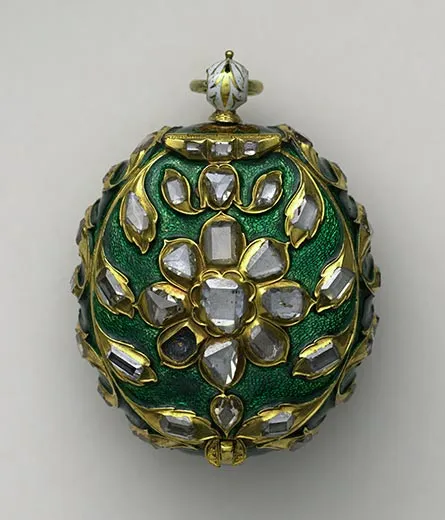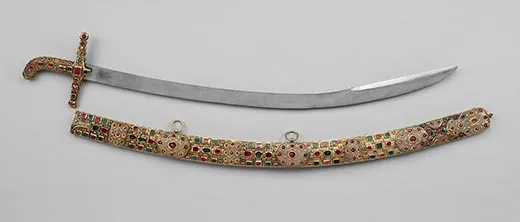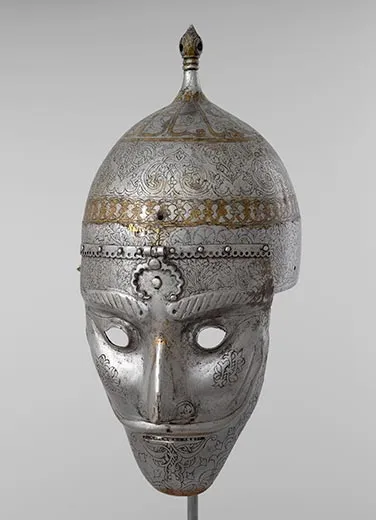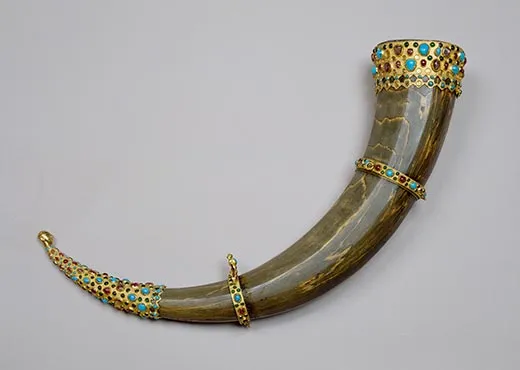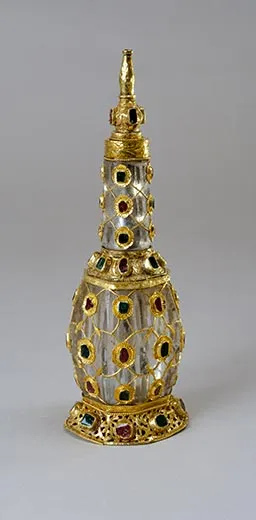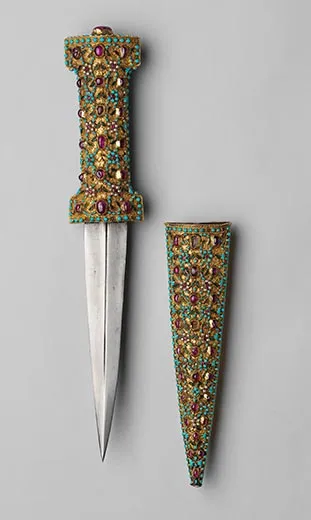Czar Treasures From the East
A trove of spectacular objects from the Kremlin’s collection highlights Ottoman opulence
/https://tf-cmsv2-smithsonianmag-media.s3.amazonaws.com/filer/Saber-and-scabbard-of-the-Grand-Attire-631.jpg)
Hundreds of miles from Moscow, the czar’s delegation waited. Ambassadors for the Ottoman sultan, laden with hundreds of glittering gifts, or rather, persuasive tools to aid in their diplomatic mission, were en route, crossing Russia’s southern border. The 16th and 17th centuries were a time of shifting political and economic alliances in the Caucasus. Russians and Ottomans vied over the costly effects should one power or the other forge a pact with Poland. In Iran, the Safavids pursued Russian military assistance against their long-standing enemy, the Ottomans. Yet above all, the empires forged alliances for economic reasons. Russia imported Turkish and Iranian silk and was host to trade routes between Eastern and European markets.
When the Russian and Ottoman delegations met, the Russian hosts escorted the long caravan of Ottoman horses and coaches through the countryside toward the city. For the czar, the sultan chose some of the most opulent and eye-catching items from the Ottoman treasury—armor inlaid with intricate gold motifs; sabers, scabbards and daggers encrusted with rubies, turquoise and pearls; and perfume bottles whose surfaces glinted with emeralds and gold. Every inch was ornamented to catch the light—and the czar’s attention.
Today, many of the lavish gifts that Russian czars received during numerous visits from the Ottoman Turks and the Safavids of Iran remain preserved in the treasury of the Kremlin. Until now, most of the objects had never been on public display outside Russia. This summer, 65 of the Kremlin’s finest works, some pulled for the first time from the storage vaults of the Kremlin armory, are on view at the Smithsonian’s Arthur M. Sackler Gallery through September 13.
Textiles, especially from the Ottoman world, were Russia’s biggest import, explains Massumeh Farhad, curator of Islamic art at the Sackler. The sultan sent reams of gold-embroidered textiles -- the most coveted of Turkish imports – with the bold Ottoman tulip patterns that Russia’s noblemen had grown to admire. Kremlin artisans would sew the most valuable of these fabrics into ecclesiastical garments for leaders of the Russian Orthodox Church. Several ambassadors—powerful Greek merchants—brought gifts for the patriarch from Istanbul’s Greek Orthodox Church.
The exhibit’s saddlecloths, horse coverings and velvet curtains also feature the bold, characteristic floral patterns of Ottoman tulips and carnations. Some textile items were so precious they would be taken apart and remade, or repurposed, for other uses. A satin horse covering from the 17th century made from pieces of clothing—including, quite possibly, a Turkish robe worn by Ivan the Terrible.
When a caravan arrived at the Kremlin, the ambassadors presented their gifts to the czar and his court, says Olga Melnikova, curator of arms and armor at the Moscow Kremlin Museums. The czar’s servants carried the opulent dishes, perfume bottles and other personal items directly to the czar’s private chamber. The rest of the splendor -- the armor , the weapons and the textiles -- was divided up for cataloging and appraisal.
But first, the czar himself hand-selected items for his “Grand Attire.” These helmets, saddles, sabers and other highly valuable items were set aside for official processions and military inspections to convey his wealth and power to the Russian people. When the czar appeared in public, soldiers and members of the court donned pieces from the Grand Attire, mixing and matching for the greatest spectacle, Farhad explains. One nobleman might sport a Polish shield, and Persian robe and use Turkish horse trappings.
The ambassadors also handed over agreements they hoped the czar would sign. After an official dinner, the Ottomans would return to their visitors’ quarters and waited for a response from the czar. Before their final meeting to discuss the new accords, their gifts would be appraised and rated numerically in categories—all saddles were rated from most to least valuable. By the final meeting, with the czar’s calculations completed, and depending on relations with Turkey, he might choose an array of even more valuable gifts than he had received. The Ottoman ambassadors might receive furs and leathers—perhaps falcons, trained for the hunt—to take back to the sultan.
For saber blades and other weapons, Russia relied on Iran, whose craftsmen were known for their work with watered steel, says Melnikova. One splendid saber blade on exhibit at the Sackler bears the Arabic inscription “The owner will become famous.” Its scabbard (the sheath for holding the blade) is fashioned with round gold plaques, each decorated with turquoise, rubies, emeralds and diamonds.
A stunning Iranian shield from the 16th century, one of several Grand Attire objects in the exhibit, showcases Iranian metalworkers’ attention to detail. The shield’s spiral design is impressive from a distance, ornamented with rubies, pearls and turquoise. But a closer look reveals each spiral band is inlaid with tiny gold figures of animals and hunters amid flowers and vines. “It’s the only one of its kind,” Farhad notes.
The Russian noblemen loved the boldness and color of the Ottoman and Safavid style, says Melnikova, and the Eastern designs began to influence Russian arts. Craftsmen in the Kremlin workshops—Russians and foreigners—might be tasked with creating something in a Turkish pattern. One Russian-made quiver and bow case from the 17th century is embroidered with large gold and silver carnations, and without documentation, it would be difficult to tell whether the piece is Russian or Turkish, she explains.
Russia’s fascination with Eastern arts ended late in the 17th century with Peter the Great, who shifted his attention to the West and moved the capitol from Moscow to St. Petersburg. Peter wanted to start new traditions and make new friends in Western Europe, Melnikova says. He wasn’t drawn to the extravagant style and slow, ceremonial way of life in the East.
Yet he knew the value of the Ottoman and Safavid treasures, and he preserved them in the Kremlin treasury. No longer in use, the gifts became museum riches.
